Retro Replay Review
Gameplay
Ranx: The Video Game thrusts players into a side-scrolling beat ’em up where timing and positioning are everything. You control Ranx, a hulking cyborg with devastating kicks and punches, as he barrels through neon-lit cityscapes. Each level unfolds in classic 2D fashion, but the combat system adds depth with light and heavy attacks, air juggles, and grab maneuvers that feel satisfying when chained together.
(HEY YOU!! We hope you enjoy! We try not to run ads. So basically, this is a very expensive hobby running this site. Please consider joining us for updates, forums, and more. Network w/ us to make some cash or friends while retro gaming, and you can win some free retro games for posting. Okay, carry on 👍)
The enemy roster is eclectic, ranging from agile ninjas to organized street gangs, and—controversially—even characters described as “homosexuals” and members of a Chinese syndicate. While this broad array of foes aims to maintain variety, it also highlights the game’s dated and problematic approach to representing marginalized groups. Nonetheless, each enemy type brings unique attack patterns, forcing you to adapt on the fly or risk being overwhelmed.
Item management plays a surprisingly important role. Defeated foes drop components you can use to repair Ranx between stages, or trade with NPCs for weapons and upgrades. You can also smash street lamps to earn extra credits, although drawing the attention of patrolling police officers can quickly turn routine grinds into frantic escapes. These mechanics add an element of resource juggling rarely seen in beat ’em ups of this era.
Boss encounters punctuate the run with unique challenges that test your mastery of the controls. From bio-mechanical monstrosities to cyber-samurai warlords, each fight is a gauntlet of projectile attacks and unblockable strikes. Success hinges on learning enemy tells and exploiting brief windows of vulnerability, rewarding persistence with a sense of achievement that keeps you pushing forward.
Graphics
The visual style of Ranx pays clear homage to its comic book origins, adopting a gritty, hand-drawn aesthetic that oozes punk attitude. Character sprites are large and detailed, capturing Ranx’s bulky frame and the exaggerated features of the villains he faces. Backgrounds alternate between crumbling city streets and futuristic labs, each layered with parallax scrolling that gives the stages a surprising sense of depth.
Color palettes lean heavily on dark tones punctuated by electrifying neons—hot pinks, sickly greens, and vivid blues—that mirror the dystopian setting of the original Ranx à New-York comics. While some textures appear blocky by today’s standards, the overall presentation remains charming in its retro authenticity. Animations are fluid, with Ranx’s punches and kicks feeling weighty thanks to strong keyframes and effective motion blurs.
Special effects shine most during combat. Sparks fly when metal meets metal, and explosive takedowns light up the screen with satisfying SVG-style bursts. Environmental destructibility—like smashing street lamps or crumbling walls—further enlivens the world, reminding you that, despite its pixel-art roots, Ranx is no static backdrop.
Cutscenes, presented in a comic-panel format, successfully fuse narrative exposition with striking artwork by Tanino Liberatore. Speech bubbles and onomatopoeic captions maintain the game’s graphic-novel vibe, though text readability can suffer against busy backgrounds. Still, these interludes provide welcome context for Ranx’s mission and break up the action with dramatic flair.
Story
The premise leaps right off the pages of the Italian comic book Ranx à New-York. A lethal virus is wreaking havoc, and the President himself has fallen victim to its deadly spread. As Ranx, your initial goal is straightforward: transport the antidote to New York and save the leader of the free world. From there, the narrative shifts to a daring rescue mission in Rome, where Ranx must reunite with his kidnapped partner.
Dialogue is sparse but punchy, reflecting the terse style of the source material. NPCs dispense mission briefings between levels, foreshadowing larger revelations about the conspiracy behind the viral outbreak. While character development is minimal—most personalities are defined by attitude and physicality rather than backstory—the relentless pacing ensures you stay engaged through the two major acts.
Despite its simplicity, the storyline is bolstered by clever nods to punk and cyberpunk tropes. Corporate overlords, underground resistance cells, and shady medical experiments all make appearances, weaving a tapestry of intrigue that complements the visceral action. The plot never overstays its welcome, clocking in at just the right length for a beat ’em up while still delivering a sense of urgency.
However, the game’s decision to represent certain protected groups—specifically homosexuals—as generic enemies is deeply problematic. Modern players will likely find these depictions jarring and insensitive. While one can appreciate the game’s faithfulness to its 1980s roots, it’s important to approach these sections critically and recognize them as dated creative choices rather than nuanced commentary.
Overall Experience
Ranx: The Video Game is a love letter to old-school arcade brawlers, combining frenetic action with a bold visual style lifted straight from Italian comics. Its tight combat mechanics and resource crafting elements distinguish it from its peers, ensuring that each run feels fresh and strategic opportunities abound. For fans of side-scrollers, Ranx offers a gratifying challenge that rewards dedication.
That said, the title isn’t without its flaws. Some stages suffer from repetitive enemy placement, leading to occasional monotony. A respawn system that drops you back at the start of a long segment can feel punishing, especially during tougher boss battles. Additionally, the handling of marginalized groups as mere cannon fodder detracts from the experience, reflecting an era-specific blind spot rather than thoughtful representation.
On the technical side, load times are minimal and the frame rate remains solid even in the busiest moments. Sound design leans into industrial beats and distorted synths, enhancing the dystopian ambiance. Voice clips are used sparingly but effectively, punctuating key attacks and boss introductions with a satisfying punch.
Ultimately, Ranx: The Video Game provides a memorable if imperfect journey through a grimy cyberpunk world. Its unique blend of beat ’em up action, collectible-based upgrades, and comic-inspired presentation will appeal to genre enthusiasts and nostalgic retro gamers alike—so long as they’re prepared to engage critically with some of its more outdated elements.
 Retro Replay Retro Replay gaming reviews, news, emulation, geek stuff and more!
Retro Replay Retro Replay gaming reviews, news, emulation, geek stuff and more!
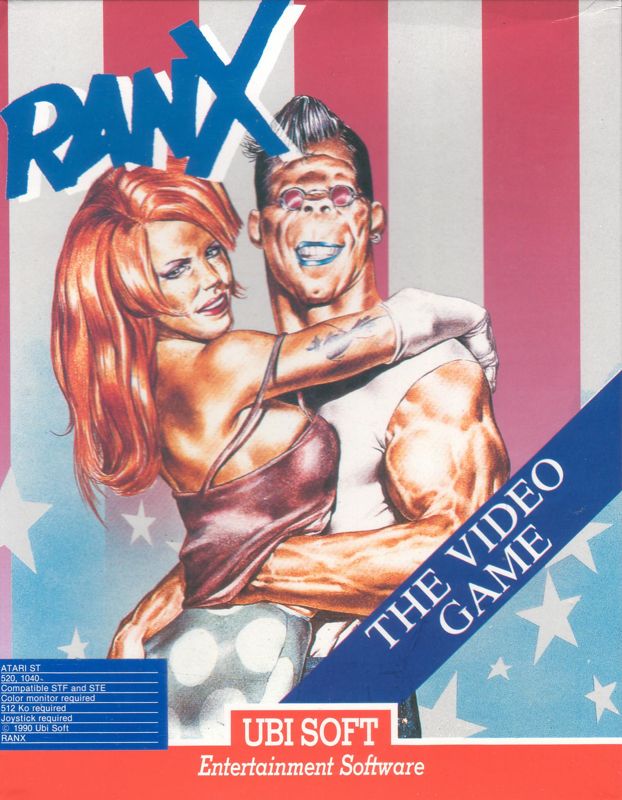
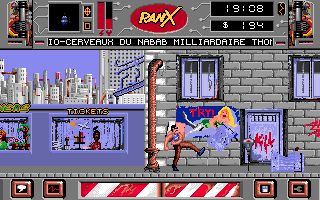
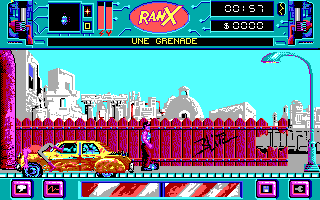

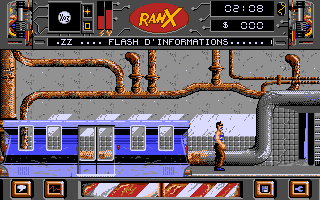
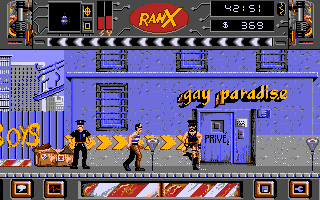



Reviews
There are no reviews yet.